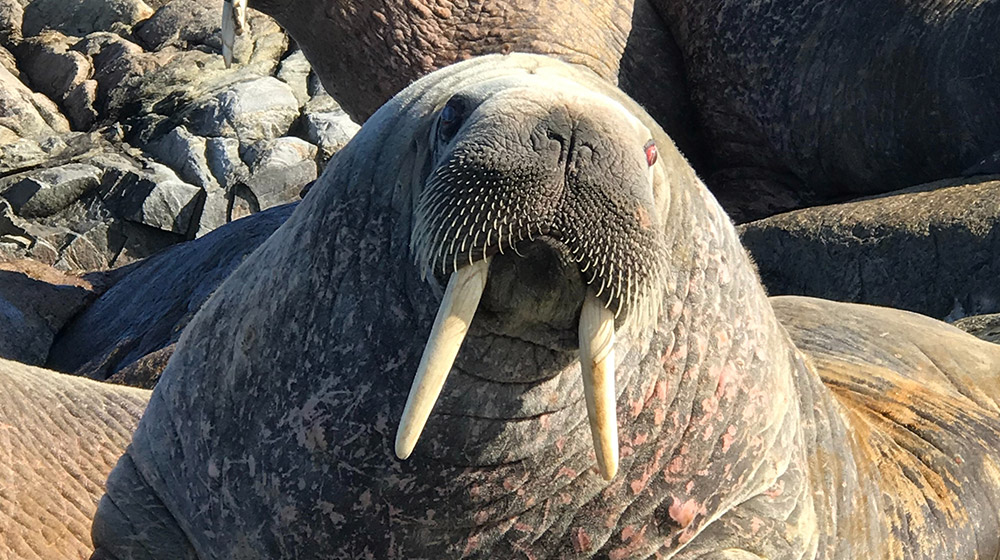For The Planet
If you haven’t yet seen David Attenborough’s most recent documentary A Life On Our Planet, watch it this weekend. Like all of Sir David’s BBC documentaries, it’s beautifully made, engaging and inspiring, featuring some of the finest wildlife and nature videographers on the planet.
Must-See Documentary
In terms of a video production benchmark, you can’t really go past a David Attenborough BBC documentary – they are stunning! A Life On Our Planet is no exception, but in this case, even if you are pretty environmentally aware, it is also quite shocking. At the end of the program, David asks if you think anyone else should see it, and frankly I think everyone should so I’m writing this post. I’ve been a David Attenborough fan since the 1970’s. As a kid growing up in the UK, David was as familiar to viewers as the Queen. His shows introduced us to the incredible diversity and complexity of the natural world in a way that had never been done before, and we marvelled at its incredible beauty, diversity and at times, cruelty. I also marvelled at the beautiful production quality, although I didn’t know that was what it was at the time. I’ve been watching his documentary shows avidly ever since, and there is no question it influenced my desire to become a film maker and a video editor.
All film and video editors have a ‘dream job’ that they’d drop everything to go and do.
Ask any editor the thing that most inspires them or the project they think would be the most fun, and they’ll likely have an answer. A work colleague on my last TV contract once told me his absolute dream editing job would be to work on ‘Ru Paul’s Drag Race’! For me, it was always a David Attenborough documentary. If I could have my ‘dream’ video editing job, that would be it. Ok, I’ll admit I’d also love to do Dr Who. Here’s a link to the episode of Dr Who: The Christmas Invasion which inspired the title for this post, ‘For the Planet’. In some of Sir David’s more recent series though, what was once a total dream job has shown signs of becoming increasingly harrowing work for both the videographers and the editors involved in creating the program. If you have seen the controversial scenes in ‘Our Planet – Frozen Worlds’ I’m guessing that you’ll know exactly what I mean. In general, an editor would walk a fine line in putting some scenes in, and excluding others. Not denying the truth that the wild world is sometimes cruel and harsh, but not showing so much of this that it puts its audience off their dinner. Netflix was criticised for showing footage of walruses falling from the top of cliffs, forced up there due to the ice melt leaving them nowhere else to go, and then plummeting to their deaths because walruses are simply not built to climb.
It is very confronting footage. It made me cry when I watched it.
I wondered how on earth the videographers could go on filming. Later on, when I watched the Behind the Scenes documentary of Our Planet, I found out. Some of the crew cried too. When I was younger, David Attenborough documentaries were all about the beauty of nature and the wonderful animal life it supports. He was never an activist, in fact he said on more than one occasion that he preferred not to preach to his viewers, instead opting to just give them the facts and allow them to make up their own minds. To see him become an environmental activist aged in his 90’s has been quite a surprise in some ways, but in others you could see his feelings about the changes he was witnessing in the natural world, his concern and frustration growing, and with increased criticism towards him in the media for not speaking out more perhaps it was inevitable. I’ve watched virtually all of his nature programs over the years and the changes that were perhaps not so apparent to those of us less adventurous, or living in cities, began to become clearer. More pollution, more threatened species, changes in the climate, more land clearing, increasingly wild weather patterns, and rapid increases in the arctic and antarctic ice-melt. Now, the tundra in Siberia (a huge carbon-sink) is burning. The arctic has been burning too.
Wildfires like we’ve never seen hit Australia in late 2019, and are currently raging in California.
Tackling this can feel like an overwhelming task, one we’re not equipped for but as always Sir David aligns himself with a positive outlook, finishing A Life On Our Planet by saying that we can fix it, just as he did at the end of Our Planet. The new documentary is once again factual, practical, and takes the view that if enough of us get on board, we can make the change we need happen. Just like we did with the international response to Covid-19 (more or less), and for those of us old enough to remember, the way we did to stop the whaling industry and to act to close the hole in the Ozone layer over Antarctica caused by CFC’s in the 1980’s. The world, when united and mobilised, is capable of anything, even the seemingly impossible. We just need the will to do it. Thalia Kemp is the founder of Sonic Eye video and sound editing service in Sydney, Australia.

